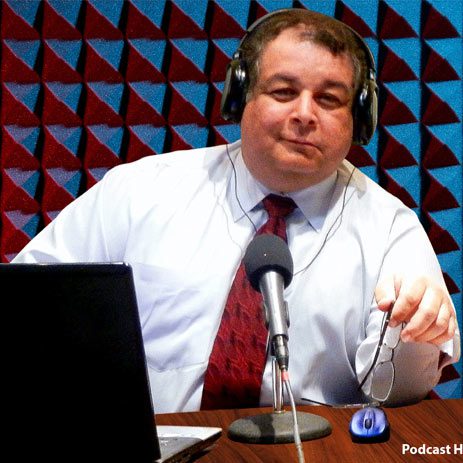How to Deal with Elderly Incontinence
Incontinence among the elderly is a significant issue that impacts their dignity, independence, and overall quality of life. It is a condition characterized by the involuntary loss of urine or feces, posing daily challenges not only for those directly affected but also for their caregivers. Understanding incontinence involves recognizing its various forms, underlying causes, and the emotional and physical toll it takes on individuals. Addressing this issue with sensitivity and appropriate care is essential for enhancing the well-being and comfort of elderly individuals living with incontinence.
Different Causes for Incontinence
Incontinence in the elderly can arise from a myriad of causes, each contributing to the condition in unique ways. Recognizing these causes is the first step toward effective management and treatment.
Urinary Tract Infections (UTIs)
Urinary tract infections (UTIs) are a common culprit behind temporary episodes of incontinence in elderly individuals. The irritation of the bladder caused by UTIs can lead to increased urgency and frequency of urination, exacerbating symptoms of incontinence. Prompt treatment of UTIs can often alleviate these symptoms, highlighting the importance of early detection and intervention.
Aging
The natural Aging process plays a significant role in the development of incontinence. As individuals age, the muscles of the urinary tract and bladder tend to weaken, diminishing their ability to control urination effectively. This weakening, combined with a decrease in bladder capacity, can significantly increase the likelihood of incontinence episodes.
Hysterectomy
For women, undergoing a hysterectomy—surgical removal of the uterus—can impact the pelvic floor muscles and nerves that support bladder control. This surgery can lead to weakened support for the bladder and urethra, resulting in Stress incontinence or an overactive bladder.
Nerve Damage
Nerve damage resulting from conditions such as Diabetes, Parkinson’s disease, multiple sclerosis, or spinal cord injuries can affect the nerves that control the bladder. When these nerves are damaged, they may not signal the bladder correctly, leading to incontinence.
Muscle Weakness
Muscle weakness, particularly in the pelvic floor muscles, can be a direct consequence of neurological diseases or events such as a Stroke. This weakness impedes the proper functioning of the urinary system, contributing to incontinence.
Seeking Professional Guidance for Elderly Incontinence
Professional guidance from healthcare providers is crucial in managing incontinence. A thorough medical evaluation can help identify the specific type of incontinence, its causes, and the most appropriate treatment options. Treatments may range from Lifestyle changes, such as fluid and Diet management, to pelvic floor exercises, medications, and even surgical interventions in more severe cases. Regular follow-ups and adjustments to the care plan ensure that the chosen strategies such as using different kinds of incontinence pants remain effective and responsive to the individual’s needs.
Products for Elderly During Incontinence
A variety of incontinence clothing and products are available to assist elderly individuals in managing incontinence, each designed to offer protection, comfort, and dignity.
Adaptive Clothing
Adaptive clothing includes garments designed for easy removal and change, which is particularly beneficial for individuals with limited mobility or those who require assistance from caregivers. Features such as magnetic and zipper closures, snap buttons, and adjustable designs make dressing and undressing simpler and less intrusive.
Bed Mattress and Chair Protection
Protective covers and pads are indispensable for keeping beds, chairs, and other surfaces clean and dry. These products are designed to absorb leaks efficiently, reducing the need for constant laundering and maintaining a hygienic living environment.
Adult Diapers
Adult diapers are a well-known solution for managing moderate to severe incontinence. They come in various sizes and absorbency levels to accommodate different needs, providing reliable protection and helping to prevent skin irritation and odors.
Incontinence Underwear
Incontinence underwear offers an ideal blend of normalcy and functionality, resembling regular underwear while incorporating absorbent materials. This option is perfect for individuals seeking a discreet way to manage their incontinence.
Pads and Liners
For mild to moderate incontinence, pads and liners present a less intrusive option. These can be used inside regular underwear to absorb leaks, offering flexibility and ease of use.
Skin Care
Maintaining skin health is vital for individuals with incontinence, as prolonged exposure to moisture can lead to irritation and skin breakdown. Specialized creams, wipes, and cleansers are available to protect and nourish the skin, preventing discomfort and infections.
Catheter
In cases where other methods are not viable or effective, a catheter may be used for urinary incontinence. Catheters can provide a continuous solution for urine drainage, requiring careful monitoring and maintenance to prevent infections. You can look into what catheter pants are for a better understanding to clothing that helps catheter users.
How Can Caregivers Provide Support for Elderly Adults with Incontinence?
Caregivers play a critical role in the daily management of incontinence, offering both physical assistance and emotional support. Here are some ways caregivers can support elderly adults with incontinence:
Maintain Health and Hygiene
Ensuring regular cleaning and timely changing of incontinence products is essential to prevent skin issues and infections. Caregivers can help establish a routine that maintains hygiene while respecting the individual’s privacy and dignity.
Create a Supportive Environment
Adjusting the living environment to be more incontinence-friendly can significantly improve the quality of life for those affected. This may include making bathrooms more accessible, using waterproof mattress covers, and setting up a bedside commode for nighttime needs.
Provide Emotional Support
The psychological impact of incontinence cannot be overstated. Caregivers should offer empathy, understanding, and reassurance to help mitigate feelings of embarrassment and frustration. Encouraging open communication about needs and preferences can also foster a sense of control and independence.
Creating a Care Plan
A well-thought-out care plan, possibly developed in collaboration with healthcare professionals, can streamline the management of incontinence. This plan might include scheduled toileting, fluid management strategies, and the use of appropriate incontinence products.
Conclusion
Managing elderly incontinence is a multifaceted challenge that requires a comprehensive approach combining professional medical advice, suitable products, and compassionate Caregiving. By understanding the underlying causes, employing effective management strategies, and providing unwavering support, caregivers can significantly improve the lives of elderly individuals dealing with incontinence. This not only helps in maintaining their physical health but also in preserving their dignity and enhancing their overall well-being with comfort clothing for seniors.























